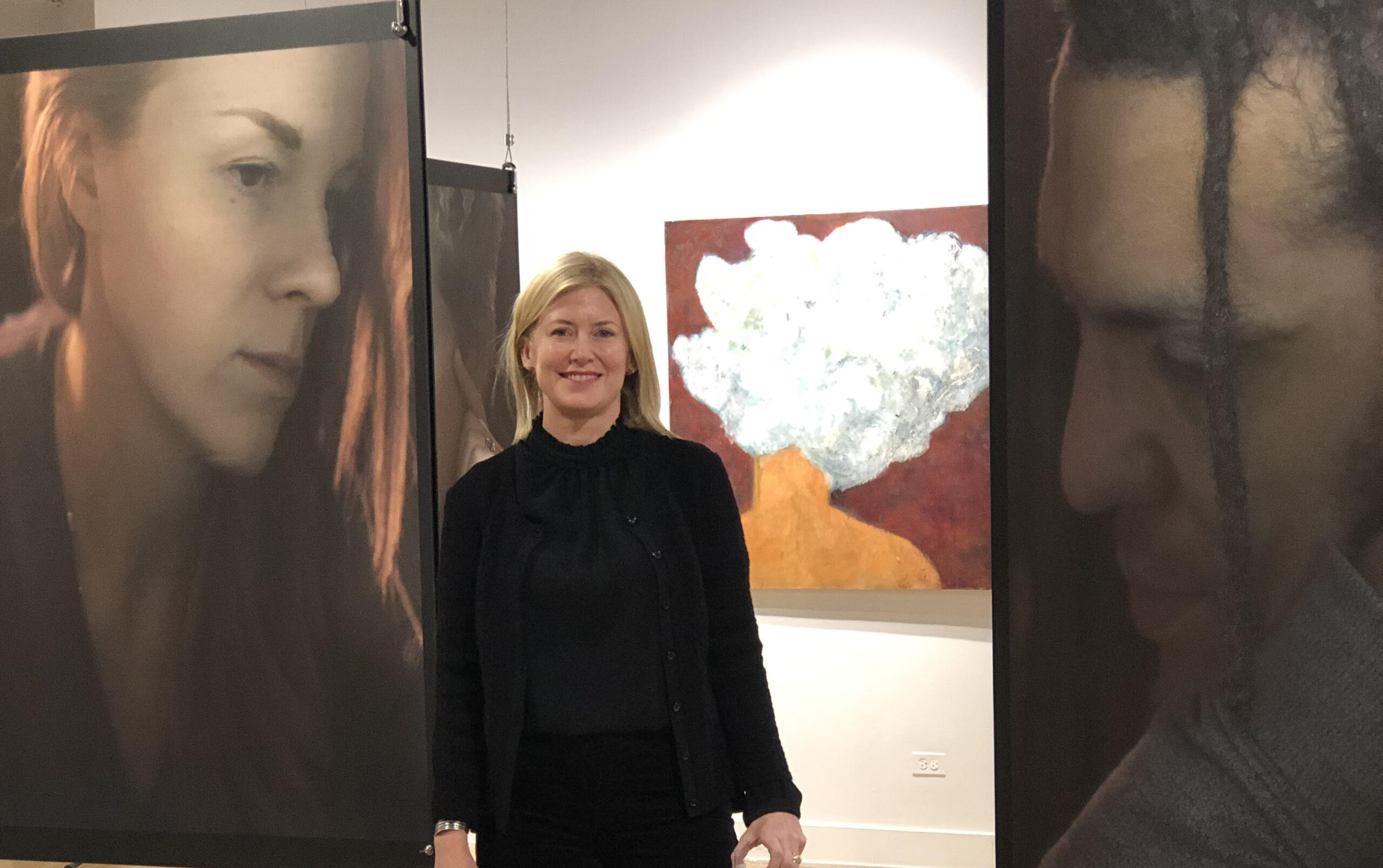Suzette Bross has a quiet energy that fuels her projects. She’s gearing up for Chicago’s International Exposition of Contemporary & Modern Art with featured works from her non-profit CPS Lives and spoke with Seaberg about her past work, current projects, and the importance of sleep.
How did you first learn about Seaberg and how long have you been working with us?
Since the nineties! Everyone in the photo community in Chicago said Seaberg was the best.
Describe the first project we collaborated on with you.
My first project out of grad school – Commute. These photographs are images of transition, images between and bordering seeing and knowing, images of movement through space, fleeting moments in time. These photographs were taken through glass, a car window. We live in an age of accelerated transition. These images are of the “in-between” places.
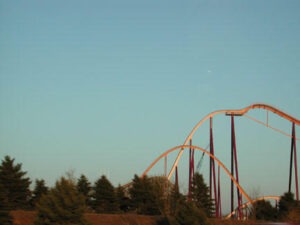
Commute 1 (rollercoaster), Suzette Bross.
What is the range of work we’ve helped within the past? Have we ever assisted with a particularly technically challenging project?
Photos, photos, photos! I’ve gone frameless for a couple of projects (Commute: Trucks and For the Glass) which can be difficult to mount to a wall or in the case of For the Glass create a system where I could double hang my images and hang them from the ceiling so viewers could experience an image off the wall in a more three dimensional way.
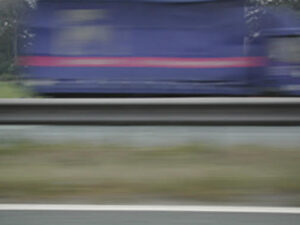
Pink Stripe & Rail, Suzette Bross.
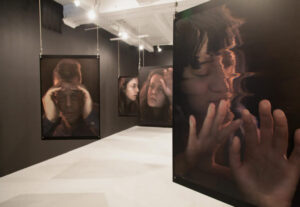
For the Glass Installation, Suzette Bross.
How would you describe your aesthetic? How has your artwork evolved over time, whether in theme, subject, style, or execution?
I grew up with Szarkowski’s views on photography and the photo shows at the Art Institute of Chicago under David Travis. I lurked around the photo galleries of New York City and Chicago in the nineties and went to grad school with the formalist traditions of the Institute of Design. My work, whether landscape or portrait, is about perception and how we see the world. My Commute work is a commentary on how we see the world with landscapes and the distancing spaces of our screens and For the Glass looks at the distancing yet intimate views of the world through screens with portraiture.
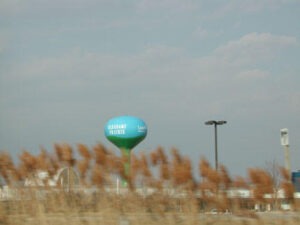
Commute 3 (Pleasant Prairie), Suzette Bross.
I documented my performed Walks work with my ever-present camera phone to show the beauty in the formalist elements of the mundane. Currently, I am working on my Principal Project. I am taking formal portraits of Chicago Public School principals in their offices to show what leadership looks like in public schools today. There are too many preconceived notions about principals and their offices!
How do you organize yourself or your work as an artist?
With help! I take photos every day. Mostly notes with my phone. I never delete anything – my computers are exploding. I have been saved by cloud-based storage.
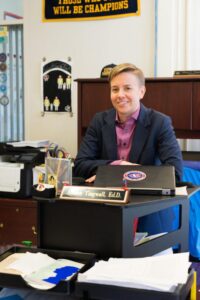
Dr. Alison Tingwall, Marie Sklodowska Curie Metropolitan High School, Suzette Bross.
What drew you toward becoming an artist? What kept you going?
It was in the genes. My grandfather was a wonderful amateur photographer, as was his father. My mother was an art historian. We went to museums for fun. I still do.
Tell us about your work on CPS Lives. What inspired you to start this non-profit?
Like my other work – perception. Too many people had preconceived notions of what public school was like. Artists are outside-the-box thinkers and I think that they are the right people to tell the stories that change perceptions of public education today.
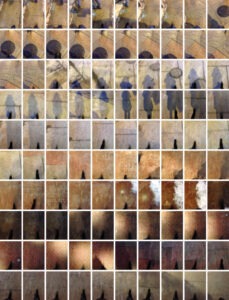
Walk 2/3/14 Division Street, Chicago, (5:29:54-5:30:53pm), Suzette Bross.
What are you preparing for EXPO 2019?
I was thrilled to show my Principal Project at Geary Contemporary last year at Expo. This year CPS Lives will be hosted at Booth #421 and we will be featuring the amazing work of Melissa Ann Pinney and Cecil McDonald. Melissa made her work at the Ogden International School and Cecil made his work at Senn High School.
CPS Lives seeks to expand our knowledge of the space students inhabit through the work of our artists produced in public schools. The artists seek to enlarge our understanding of the places students inhabit and their worldview through the use of cultural processes. This program creates ties to local communities through the exhibitions in their library branches. By creating this relationship in the public space of a city library we come to understand the complexity and importance of the public school system and the increasing importance of these public sites, their value, their diversity.
What is your favorite work you’ve created? Why?
That is like asking me to pick my favorite child! I have many – a sentimental favorite is an early black and white photograph I took of my mother walking her dog in the alley in a snowstorm at night. It is one of the last pictures I took of her before she died. She loved Chicago, her neighborhood, and her dog. The photograph had all the formal elements I love in images and it captured her essence as well.
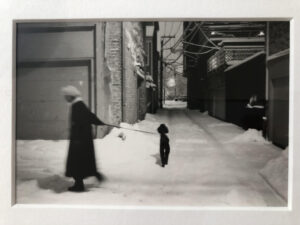
Mom and Willy Out for a Walk, Suzette Bross.
What is your next goal either personal or artistic?
To see CPS Lives grow up and thrive as an organization and to work on a photo project about color and perception. Sleep more.
What advice would you give to aspiring artists/photographers?
Don’t give up. Be true to yourself, but be open to learning and exploring new ideas as that will make your vision better. Sleep.

